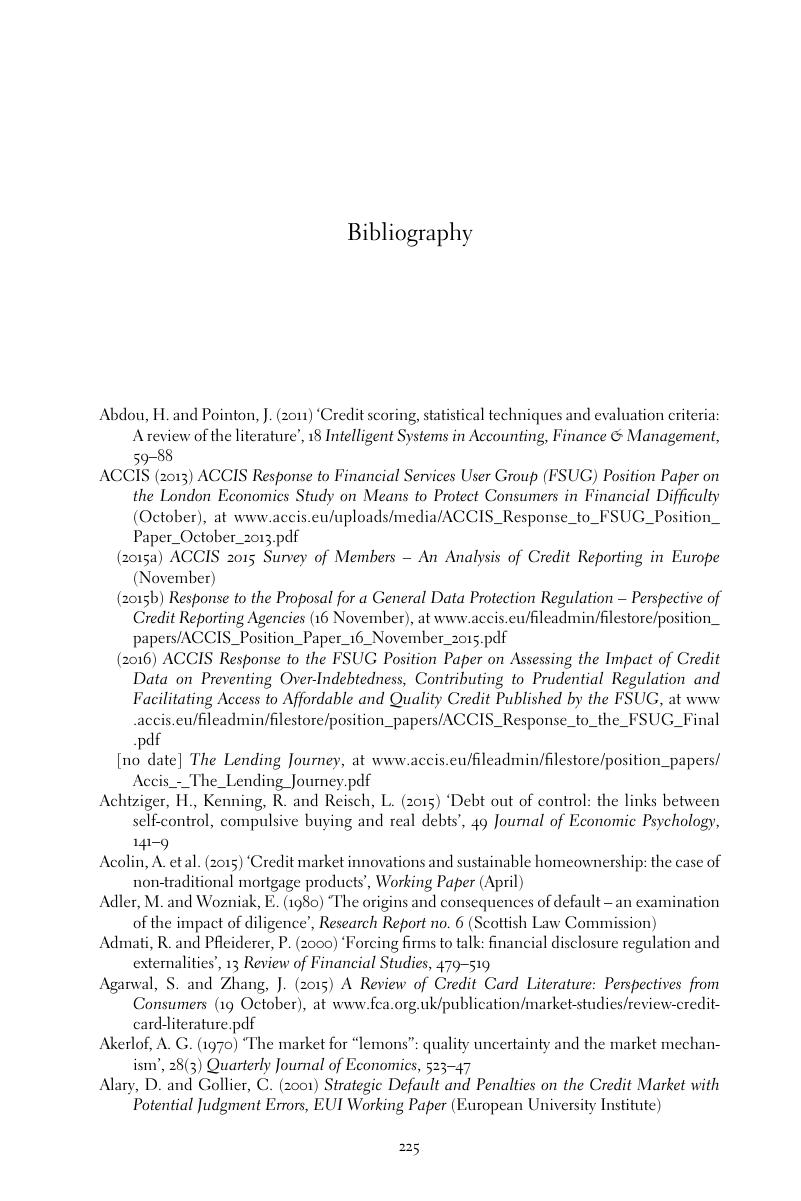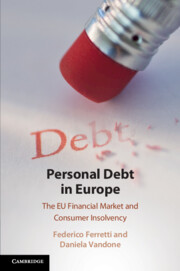Book contents
- Personal Debt in Europe
- Personal Debt in Europe
- Copyright page
- Contents
- 1 Introduction
- 2 Personal Debt in the Economy
- 3 The Industry of Personal Debt
- 4 From Indebtedness to Over-Indebtedness: Multidimensional Causes and Consequences
- 5 EU Policy and Law for the Prevention and Management of Over-Indebtedness
- 6 The Role and Function of Solvency Data and Financial Technologies (Fintech and Big Data)
- 7 Credit Risk Analysis and Creditworthiness in Relation to EU Data Protection Legislation
- 8 The Treatment of Over-Indebtedness
- 9 Conclusions and Scope for Further Research
- Bibliography
- Index
- References
Bibliography
Published online by Cambridge University Press: 05 April 2019
- Personal Debt in Europe
- Personal Debt in Europe
- Copyright page
- Contents
- 1 Introduction
- 2 Personal Debt in the Economy
- 3 The Industry of Personal Debt
- 4 From Indebtedness to Over-Indebtedness: Multidimensional Causes and Consequences
- 5 EU Policy and Law for the Prevention and Management of Over-Indebtedness
- 6 The Role and Function of Solvency Data and Financial Technologies (Fintech and Big Data)
- 7 Credit Risk Analysis and Creditworthiness in Relation to EU Data Protection Legislation
- 8 The Treatment of Over-Indebtedness
- 9 Conclusions and Scope for Further Research
- Bibliography
- Index
- References
Summary

- Type
- Chapter
- Information
- Personal Debt in EuropeThe EU Financial Market and Consumer Insolvency, pp. 225 - 244Publisher: Cambridge University PressPrint publication year: 2019



